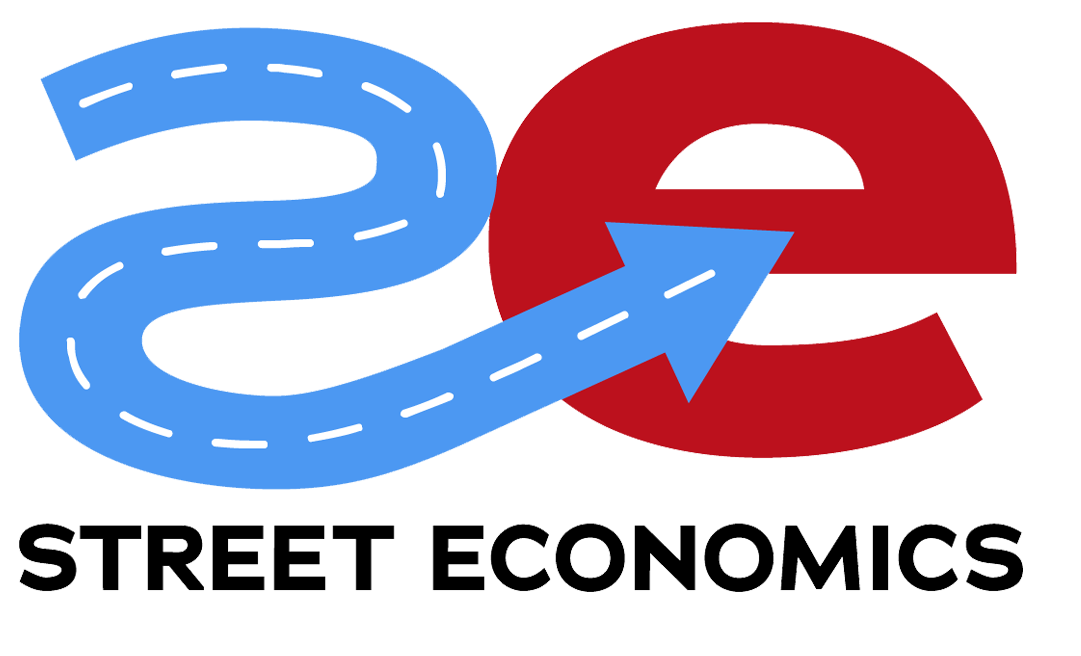Good morning, it’s April 15, 2025. Here’s your irreverently curated economic intel for today; no fluff, just the important stuff with a side of snarkiness (cause I have to go to Tallahassee). Realistic, actionable, and clearly stated, we’ll equip you to make proactive, informed decisions today.
Trump Aims Tariffs at Drugs and Microchips
The White House is forging ahead with new trade war salvos, setting the stage to slap tariffs on imported pharmaceuticals and semiconductor chips. Citing “national security” (because apparently relying on foreign aspirin and laptops is dangerous), the administration kicked off formal probes and a 21-day public comment period to justify taxing these critical imports. President Trump has already jacked up average import duties from a measly 2.5% to around 25% in just a few months; now he’s eyeing 10-25% tariffs on meds and microchips. Financial markets are understandably spooked – Wall Street has dipped into correction territory on the constant tariff drama, and even a Fed official called this trade blitz one of the biggest economic shocks in decades. Economists are downgrading growth forecasts left and right, warning that this tariff-the-world approach could fuel higher prices and kill jobs if it keeps up.
Why This Matters: Tariffs on essential goods like pharmaceuticals and tech components could hit your community where it hurts. City hospitals and pharmacies might pay more for drugs, local tech manufacturers could see chip costs skyrocket, and consumers will feel the pinch on everything from electronics to healthcare. Higher costs from these “import taxes” can feed local inflation, squeezing household budgets and city procurement alike. Plus, if the broader economy slows or slides toward recession due to an escalating trade war, expect impacts on local employment and tax revenues; your city budget could take a hit while you’re forced to grapple with the fallout of global trade politics.
Inflation Fears Spike as Americans Get Gloomy
Americans are bracing for a rough ride on prices and jobs, with consumer inflation expectations suddenly on the rise. A new Federal Reserve survey finds people expect inflation to run about 3.6% over the next year, the highest short-term forecast since late 2023, especially for everyday essentials like food and rent. In plain English, folks think their grocery and housing bills are going up even more. Longer-term inflation expectations are a bit calmer (around 3% in a few years), but that’s cold comfort right now. To top it off, households reported the bleakest outlook on their finances and job prospects since the early pandemic days. The share of people who think unemployment will increase is the highest it’s been since April 2020, and many are saying their personal financial situation is deteriorating. It’s a vibe of “batten down the hatches” even while actual inflation has been cooling, showing how fear itself can become a factor.
Why This Matters: When your residents start expecting everything to get pricier and worry about keeping their jobs, it can become a self-fulfilling headache for local leaders. People anticipating higher inflation may demand higher wages (impacting city payrolls and local businesses) or cut back on spending, which hits local sales taxes and business revenue. If families are growing pessimistic about their finances, they might delay big purchases like homes or cars, softening your local economy. This gloomy outlook is a warning sign to city officials: you may need to prepare for an uptick in demand for social services or assistance programs if households start feeling real pain. It’s also a cue to communicate clearly about your local economic plans; reassuring the public can help counter the fear-driven slowdown.
Small Businesses Lose Confidence Amid Policy Chaos
Main Street’s mood has officially soured. Small business owners across the country are a lot less chipper than they were a few months ago, as shown by a sharp drop in the NFIB Small Business Optimism Index for March. That index fell below its 50-year average, erasing most of the post-election euphoria business owners felt when they anticipated tax cuts and deregulation. So what changed their tune? In two words: policy whiplash. The new administration’s aggressive moves, from steep tariffs on imports to drastic federal spending cuts, have entrepreneurs feeling a tad freaked out. Many mom-and-pop shops went from “Yay, a pro-business government!” to “Wait, can my supply chain survive this?” practically overnight. The share of owners expecting better business conditions plummeted to the lowest level in years. Even before the latest tariff announcements fully hit, small businesses were scaling back their sales expectations, bracing for higher costs and potentially weaker customer demand. (Fun fact: Fed Chair Jerome Powell basically warned that the tariff spree is a recipe for inflation plus slower growth, not exactly the combo businesses dream of from the Fed Chair that gives alot of people nightmares.)
Why This Matters: Small businesses are the backbone of local economies; they create jobs, fill your Main Streets, and sponsor the local Little League. When they lose confidence and start worrying about the future, they hit pause on hiring, expansion, and investments. For your city, that could mean fewer new jobs and stalled development projects. Additionally, the federal spending cuts behind this anxiety might remove funding for local programs or even eliminate government jobs in your area, directly affecting your community’s income and stability. In short, jittery small businesses can translate into a colder local economy. City leaders should stay in close touch with their business community during this uncertainty, offer guidance or support where possible, and be ready to step in if key local employers start feeling the squeeze.
Global Central Banks Cut Rates as Slowdown Signs Mount
It’s not just you, the whole world’s economy is catching a case of the jitters, and central bankers abroad are responding with rate cuts to stave off a downturn. This week, eyes are on the Bank of Canada and the European Central Bank (not to mention the Bank of Narnia), both expected to trim interest rates in the face of global growth worries. The Bank of Canada already cut rates last month and is poised to cut again, trying to boost an economy that’s teetering near a technical recession. Over in Europe, the ECB is likely to cut its key rate for the first time in two years, as the eurozone grapples with weaker growth prospects (trade tensions are doing them no favors) and recent data showing inflation finally cooling a bit. Essentially, the people who print the money are saying “Houston, we might have a problem” and attempting to give their economies a bit of breathing room. Even in the US, there’s chatter that first-quarter growth might be weak and that consumers are starting to pull back, not lost on these central bankers as they make their decisions and buy new cars.
Why This Matters: When major central banks start cutting rates, it’s a signal that the economic outlook is turning south, something city leaders can’t ignore. Lower rates abroad can have a mixed impact locally: on one hand, if the trend spreads to the U.S., borrowing costs for things like municipal bonds or business loans could ease, making it cheaper for your city to finance projects and for businesses to invest. On the other hand, the fact that Canada and Europe feel compelled to juice their economies underscores the risk of a global slowdown. If Europe sneezes or China slows down, your local exporters, tourism sector, or manufacturing businesses might catch a cold. Pay attention to these global tremors; a cautious city might tighten up its financial planning, double-check reserve funds, or accelerate “recession-proof” initiatives now, before any downturn really bites.
Retail Sales Lukewarm as Shoppers Eye Tariffs
American consumers did spend a bit more in March but it was more of a cautious toe dip than a confident cannonball splash. After two months of declines, retail sales ticked up moderately last month (around 0.6% higher than February, excluding autos and gas). That sounds okay until you realize a lot of that spending was essentially folks panic-buying ahead of looming tariff hikes. In fact, the bump happened before President Trump’s self-declared “Liberation Day” in early April, when a raft of new tariffs hit a bunch of consumer goods. Retail analysts say shoppers have been nervous about prices going up, so they stocked up on things while they still could. Underneath the small gain, there’s lingering consumer caution: despite solid job growth and decent wages, people are holding back because of uncertainty (wonder why…). Many households are diverting extra cash into savings accounts instead of shopping, essentially saying “We’re not sure what chaos comes next, so let’s pocket this paycheck for now.”
Why This Matters: Consumer spending is the bread and butter of local economies and when it only rises timidly, that can squeeze your city’s finances and business community. Sluggish sales tax growth is a real possibility if people tighten their purse strings, meaning less revenue for city services or projects. Local businesses, especially retailers and restaurants, will feel the pinch if customers stay skittish; they may delay expansions or even struggle to cover costs if foot traffic stays soft. For city leaders, this is a heads-up to monitor your local sales data closely. If you see a dip, you might consider ways to stimulate commerce (think local shopping campaigns or temporary tax incentives). Also, if tariffs are making certain goods pricier in your area (say, imported electronics or materials), be prepared for community complaints and look for ways to mitigate the impact on low-income households who are hit hardest by price inflation.
Commercial Real Estate Slump Deepens (Malls and Offices in Trouble)
The commercial property landscape is looking rough, like “50%-off clearance sale” rough. Case in point: Santa Monica Place, a high-profile California mall, saw its appraised value plummet from $622 million a few years ago to about $255 million now. That nearly 60% value collapse pushed the owner into default on a $300 million loan, landing the mall in receivership (yes, things got so bad a court-appointed babysitter is now running the place). Across the country in New York, a major Times Square office plaza also had its value slashed by more than half, reflecting how badly big-city properties have struggled. It’s not just these marquee locations; office buildings nationwide are suffering from record-high vacancy rates (nearly one-fifth of U.S. office space is sitting empty) as remote work and high interest rates wallop the sector. Analysts report over $38 billion in office mortgages are at risk of default – the highest distress level since the aftermath of the 2008 crash. In short, in many places commercial real estate is in a world of hurt, and it’s starting to hit home for a lot of communities.
Why This Matters: When malls turn into ghost towns and office towers lose value, cities feel the pain. Lower commercial property values can blow a hole in your property tax revenue: less money for schools, public safety, and infrastructure. If a big shopping center or downtown office building in your city is struggling, you could also face job losses (think retail workers or building maintenance staff) and a secondary impact on nearby small businesses that rely on that foot traffic. There’s also the visual blight and public safety aspect of underused properties; nobody wants vacant buildings inviting vandalism or dragging down neighborhood morale. City leaders should be proactive: consider convening stakeholders to brainstorm redevelopment or adaptive reuse (turn that empty office into apartments or that dead mall into a community center, perhaps). Some cities are already cutting red tape to convert offices to housing. These real estate woes are a serious challenge, but they can also be an opportunity for creative reimagining of local spaces, just know that doing nothing will carry a cost.
Street Economics® is a community-focused economic intelligence service that cuts through the jargon and noise to help city leaders and citizens make sense of financial trends. It’s like having a sharp econ advisor on call – translating global and national developments into local impact and action. With Street Economics®, you get timely insights, irreverent analysis (as you’ve seen), and practical takeaways for your community. In an era of information overload, we help you figure out what actually matters for your city’s budget, businesses, and families. Ready to make smarter decisions and drive your local economy forward? Check out Street Economics® at streeteconomics.ai and see how our daily briefings and tools can help your community thrive. Go ahead, join the movement; your city’s economic future won’t wait!



Comments are closed